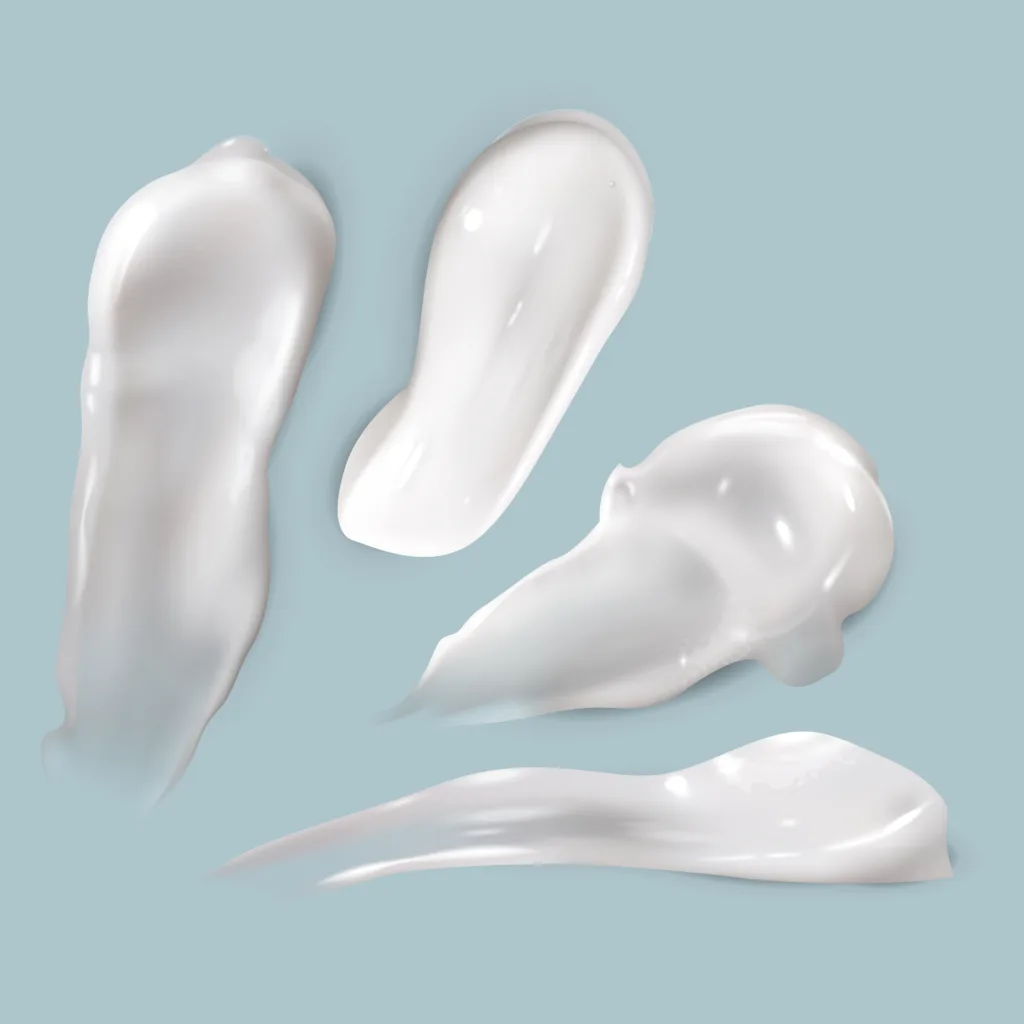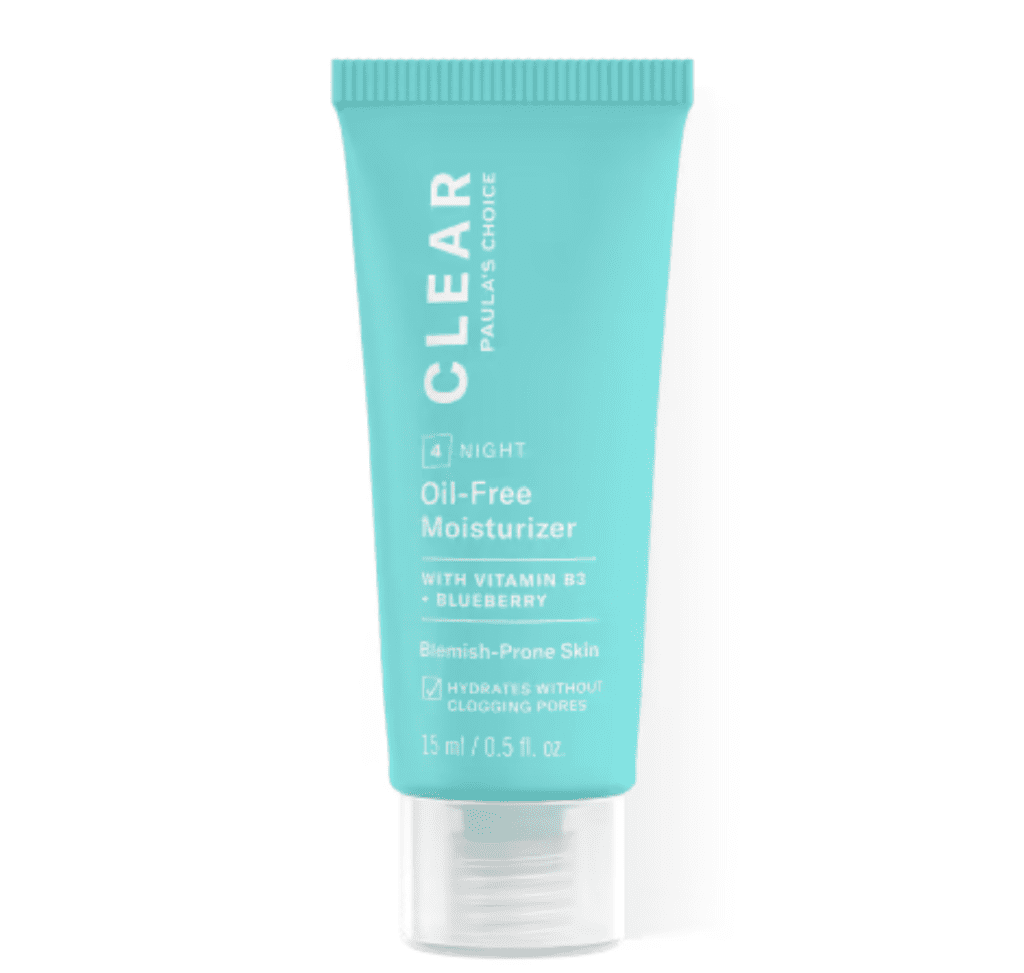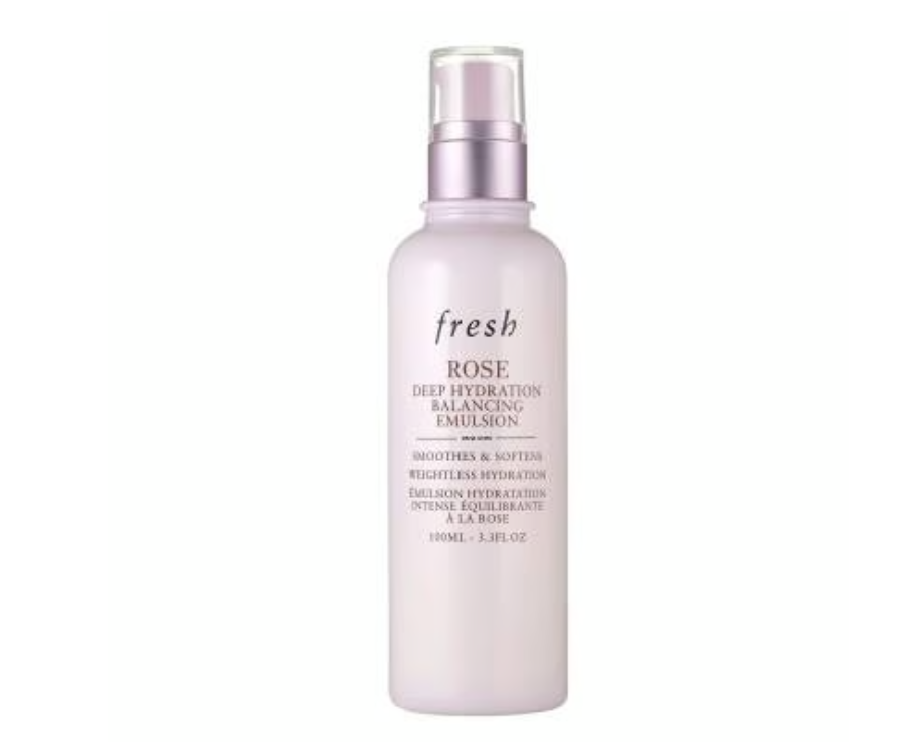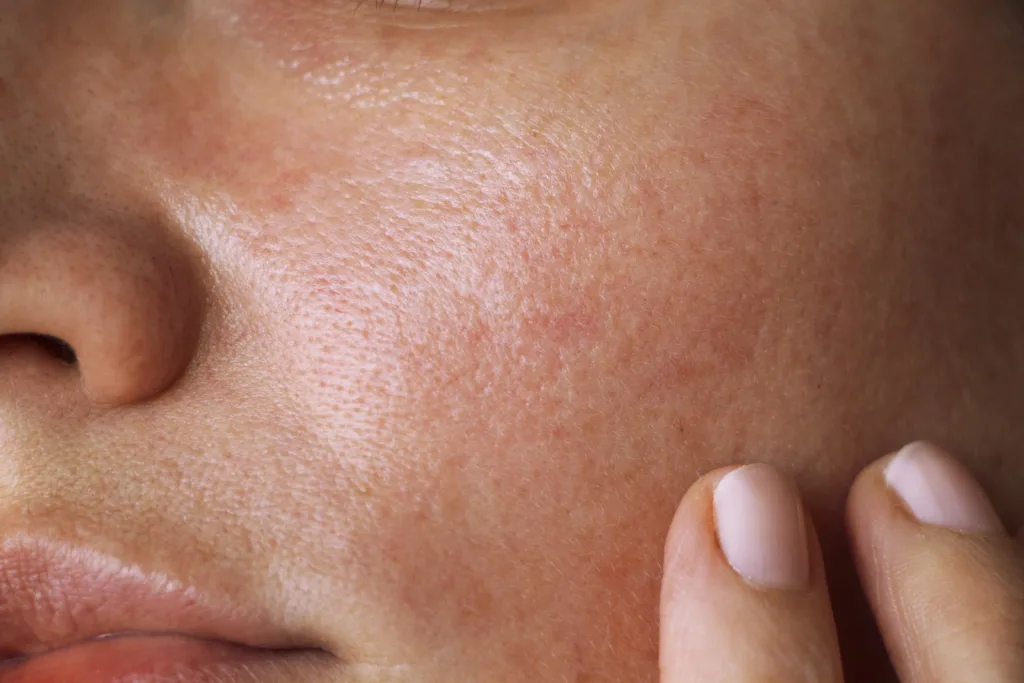
For many, achieving a well-rounded skincare routine includes finding the right moisturiser. Skincare emulsions offer a versatile and lightweight alternative to heavier creams and lotions. Composed primarily of water, these emulsions deliver essential hydration without leaving a greasy residue, making them particularly suitable for oily or acne-prone skin.
Typically, an emulsion is applied after cleansing and toning but before heavier creams and oils. Its thin, easily absorbed consistency means it can hydrate the skin deeply, often with added active ingredients to target specific concerns.
Emulsions present a unique balance of lipids and hydrating agents, making them an excellent step in both morning and nighttime routines for maintaining the skin’s moisture balance.
What are Emulsions?
An emulsion is a type of moisturiser that blends water with oils, often presented as a lighter alternative to conventional creams. They usually embody a more fluid and gel-like consistency, fundamentally existing as tiny droplets of oil dispersed in water. This fusion of ingredients aids in delivering hydration to the skin while avoiding an overly oily finish, making emulsions particularly suitable for individuals who have oily or combination skin.
The Role of Emulsions in Skincare
Emulsions provide a level of hydration that suits various skin types without overburdening the skin. They are often used after watery serums and before heavier creams to lock in moisture. Due to their lightweight nature, emulsions can hydrate the skin effectively while allowing it to breathe, making them an essential step in a layered skincare routine.
Types of Emulsions
- Oil-in-water (O/W) emulsions: These are the most common, with water as the primary phase and oil droplets dispersed within it. They are lightweight, non-greasy, and suitable for most skin types, especially oily or acne-prone ones.
- Water-in-oil (W/O) emulsions: These have oil as the primary phase with water droplets dispersed within. They are thicker and richer, offering deep hydration and better barrier protection, but might feel heavy on oily skin. They work well for dry or sensitive skin.
- Multiple emulsions: These have more complex structures with multiple water and oil phases, offering specialised functions like sustained hydration or targeted delivery of active ingredients.
Common Emulsion Textures
Emulsions come in all shapes and forms. They can range from lightweight and watery to thick and creamy, depending on the specific formulation. Here’s how they can differ:
- Lightweight lotion-like: These are most commonly referred to as emulsions and are perfect for oily or combination skin. They offer hydration without feeling heavy or greasy.
- Gel-like: These often contain more humectants and are suitable for normal to dry skin.
- Milky: These often have a blend of water and oil, offering both hydration and emollience for dry or sensitive skin.
- Creamy: These are thicker and richer, best suited for very dry skin or for nighttime use.
Emulsion Examples
This lightweight, fragrance-free moisturizer is formulated for sensitive skin. It is said to soothe and hydrate the skin, and reduce itchiness and stinging. In one study, 84% of people felt less itchy and 49% had reduced stinging after four weeks of use.


The Clear Oil-Free Moisturizer from Paula’s Choice delivers lightweight hydration without clogging pores or leaving an oily residue. It effectively soothes flaky skin, minimizes pores, strengthens the skin’s barrier with ceramides, and calms redness with powerful antioxidants like pumpkin and blueberry.
Infused with rose water, hyaluronic acid, and yarrow extract, this fast-absorbing moisturizer from Fresh, delivers deep hydration with a weightless finish. It helps to even skin texture, reduce the appearance of pores, and visibly soften dry lines for a smoother, more radiant complexion, even under makeup.

Why Should You Use Emulsions?
Emulsions in skincare offer a variety of advantages tailored to improving your skin’s health. These lightweight formulations deliver essential hydration and nutrients while maintaining a non-greasy texture that benefits all skin types.
Hydration and Moisture Retention
Emulsions are excellent for providing a boost of hydration to the skin. Their water-based structure helps retain moisture effectively, preventing moisture loss and keeping your skin hydrated throughout the day. Emulsions often contain hydrating agents that lock in moisture, leaving your skin supple and refreshed.
Non-Comedogenic Properties
These formulations are designed to be non-comedogenic, meaning they won’t clog your pores. This is particularly beneficial if you have acne-prone skin, as using non-comedogenic products can help prevent breakouts and promote a clearer complexion.
Enhanced Texture and Absorption
The lightweight texture of emulsions allows them to be quickly absorbed by the skin without leaving a heavy or sticky residue. The result is skin that feels smoother and softer to the touch. Emulsions can often provide the same nourishment as heavier moisturising creams with a more pleasant texture.
Complexion and Skin Barrier
Regular use of an emulsion can enhance your skin’s complexion, giving you a more luminous and glowing skin. The ingredients in emulsions work together to strengthen your skin’s natural barrier, protecting against environmental stressors and potential irritants.
Barrier Improvement
Emulsions often target the skin barrier, promoting its health and resilience. A robust skin barrier is crucial for maintaining long-term hydration and overall skin wellness, acting as a defence against external elements that can lead to skin damage and sensitivity.
Common Ingredients Found in Emulsions
Emulsions cater to a variety of skin needs and preferences by incorporating active components. Here are some key ingredients often found in emulsions and the roles they play in skincare:
- Glycerin: Known for its moisturising properties, glycerin is a humectant that attracts water, helping your skin to retain moisture. It’s highly effective for softening and smoothing the skin.
- Collagen Extract: Collagen is a protein that may help to improve skin elasticity and reduce visible signs of ageing. While your body produces collagen naturally, collagen extract in skincare can offer an additional boost.
- Hyaluronic Acid: This powerful hydrator can hold up to 1000 times its weight in water, which helps plump up the skin and reduce the appearance of fine lines.
- Green Tea Extract: Rich in antioxidants, green tea extract helps protect the skin from free radicals, calm irritation, and reduce redness. It also has anti-inflammatory properties.
- Ceramides: These are lipids that preserve the skin barrier and retain moisture. They help protect against environmental aggressors and prevent dryness.
Emulsions and Different Skin Types

Emulsions are optimal for varying skin types due to their lightweight formulation. Since emulsions are a fusion of water and oil, they moisturise without leaving a greasy residue.
Oily Skin
For oily skin, emulsions can be particularly beneficial. They offer the necessary hydration without adding extra oil, promoting a balance that keeps skin clear and moisturised. Unlike heavier creams, they don’t clog pores, which is a predominant concern for those with oily skin.
- Look for: Lightweight, oil-free emulsions with water-based formulas. Hyaluronic acid is still good, but consider ingredients like niacinamide or witch hazel for oil control.
- Avoid: Heavy, greasy emulsions as they can clog pores.
Sensitive Skin
Sensitive skin responds well to emulsions because of their gentle nature. These formulations are often less irritating than heavier products and deliver moisture without the associated risk of causing breakouts or redness.
- Look for: Fragrance-free, hypoallergenic emulsions with calming ingredients like aloe vera, centella asiatica, and calendula.
- Avoid: Products with harsh chemicals, essential oils, or fragrances that can trigger irritation.
Dry Skin
Individuals with dry skin can also reap significant benefits. Even though emulsions are lighter than traditional creams, they effectively provide moisture without the heaviness of richer products, making them a comfortable daily hydration solution.
- Look for: Thicker emulsions with richer textures and ingredients like hyaluronic acid, ceramides, and squalane. These help boost hydration and lock in moisture.
- Avoid: Alcohol-based emulsions, which can be drying.
Combination Skin
In the context of combination skin, which features areas of both oiliness and dryness, emulsions can deliver equilibrium. They hydrate dry zones without exacerbating oily patches, contributing to a more consistent skin texture.
- Look for: Lightweight emulsions with balanced hydration and oil control. Hyaluronic acid, niacinamide, and aloe vera are good options.
- Avoid: Products with harsh ingredients that can irritate some areas.
Emulsions for Acne-Prone Skin
If you possess acne-prone skin, a water-based emulsion could be a favourable option. These formulations are frequently lighter in weight and rich in hydration without clogging pores, making them suitable for your skin type. Always opt for fragrance-free and hypoallergenic options to minimise potential irritations.
6 Simple Steps to Layer Emulsion
Step 1. Cleanse Your Skin: Begin with a clean base to ensure your skin is free from impurities, which can hinder absorption.
Step 2. Apply Toner (optional): Use a hydrating toner to prep your skin, creating a receptive surface for the emulsion. (Depending on your preference, use a toner for additional cleansing or balancing.)
Step 3. Apply Serum (optional): If using a serum, apply it before the emulsion. Its concentrated ingredients penetrate deeply into the skin.
Step 4. Apply the Emulsion: Choose one emulsion that addresses your overall skin needs and apply a thin, even layer. Dispense a small amount of the emulsion onto your fingertips and massage in a circular motion until absorbed. Allow it to dry completely.
Step 5. Seal in Moisture (optional): While optional, you can apply a heavier moisturiser or cream after the emulsion to seal in the hydration. (Normally used by those with very dry skin).
Step 6. Sunscreen (daytime): Always finish with sunscreen in the morning, regardless of other products.
Emulsions and Moisturisers

Emulsions and moisturisers each serve unique functions with distinct properties. An emulsion is essentially a fusion of water and oil, creating a lightweight formula that hydrates without heaviness. Emulsions typically have a more fluid and gel-like consistency, allowing for swift absorption by the skin without leaving residue.
Contrastingly, moisturisers generally have a thicker texture, ranging from lotions to rich creams, and are designed to create a barrier that seals in moisture. This can be highly effective for dry skin types but may feel too occlusive for oily or acne-prone skin.
If your skin leans towards oily, incorporating an emulsion can provide the needed hydration without excess oiliness. Conversely, if you’re battling dry skin, you might prefer a moisturiser for its nourishing benefits.
Takeaway
Emulsions offer a unique approach to skincare, combining lightweight hydration with versatility. These water-based blends skip the greasiness often associated with moisturisers, making them a welcome option for various skin types. Notably, emulsions deliver essential moisture without clogging pores, a boon for oily and acne-prone skin. Beyond that, they support moisture retention, improve complexion, and even strengthen your skin’s natural barrier for enhanced protection.
They are best applied after cleansing and before heavier creams (optional), with sunscreen always being a non-negotiable step for complete protection.
Here’s what to remember about emulsions:
- Lightweight Hydration: Ideal for layering, emulsions give your skin essential moisture without clogging your pores.
- Absorption: Their thinner consistency allows for quick penetration into the skin, delivering active ingredients effectively.
- Versatile Use: Emulsions can be adapted to various skin concerns by incorporating different ingredients.